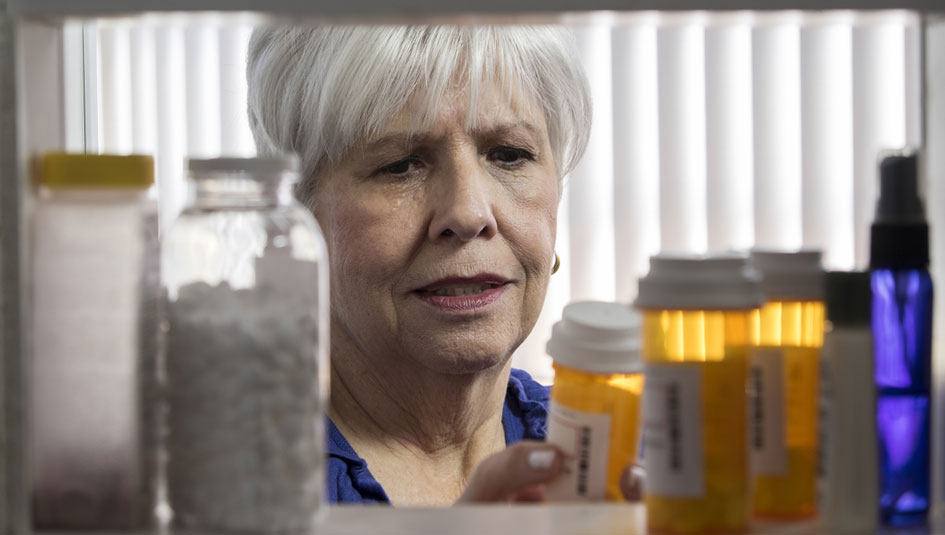Janssen’s SGLT-2 Drugs and Risk of Amputations: What Happened, and What’s Next?

Invokana, Janssen’s canagliflozin product, and its metformin-added cousin Invokamet, are oral Type 2 medications which prevent the kidneys from reabsorbing excessive blood glucose and instead route it out of the body through the urinary tract. In May, we reported that the Food and Drug Administration had required Janssen to rewrite its package insert and its prescribing information to include a prominent warning, called a boxed warning, about risk of toe, foot, and other lower limb amputation. Last month, the FDA updated its May 18 warning with an announcement that the manufacturer had added the stepped-up safety warning to packages shipping to pharmacies, and had posted the upgraded warning on its product sites.
The CANVAS and CANVAS-R Trials
All new antidiabetic drugs submitted to the FDA since 2009 for clearance have required cardiovascular outcome trials. Because Invokana works in the kidneys, the drug’s effect on renal health required clinical assessment as well. The amputation risk was identified in two clinical trials, launched while canagliflozin was in development — CANVAS to assess cardiovascular outcomes and then the renal outcome trial CANVAS-R, both sponsored by Janssen and collaborator George Institute for Global Health in Australia. Both trials continued beyond the U.S. clearance dates and were completed in February of this year, and both compared the experience of patient groups taking the drug to those of groups taking a placebo. Of the original 10,142 patients, 9,734 completed the trials, at 667 locations in 30 countries.
An article on June 12 in New England Journal of Medicine summarizes the unexpected amputation risk result — the Invokana group had experienced twice the toe, foot, or lower leg amputations as the placebo group. That is what prompted the FDA to go ahead and order the higher-visibility form of warning to prescribers and users. The boxed warnings and accompanying patient and physician drug information for Invokana and Invokamet are available to read on Janssen’s product information sites.
There were, as had been hoped, substantial benefits reported out of the two trials: reductions in cardiovascular death, non-fatal heart attacks, and non-fatal strokes by 14%, and a lowering of renal complications by 40%, in the Invokana subgroups. With some exceptions, as Medscape reported on June 16 of this year, the cardiovascular and renal data were comparable to what had come out of a 2015 trial of another SGLT-2 drug, Eli Lilly’s empagliflozin (brand name Jardiance).
Canagliflozin’s Success
For anyone considering whether to adopt a “gliflozin” as an add-on to the traditional menu of oral glucose control agents, just spelling the names of all the products — subclass and brand — will become a skill in itself. They work equally well to rid the body of excess sugar, as long as users heed their manufacturers’ advice to drink plenty of water to avoid; dehydration and associated stress to the kidneys; DKA in an extreme case; and urinary tract inflammation. The FDA cleared Invokana for the market in March 2013. AstraZeneca’s dapafliglozin (Farxiga) followed to the U.S. market in January 2014 and then Lilly’s empafligozin that August. All the products in the SGLT-2 class are indicated for use as Type 2 glucose control therapy, and are not recommended for people with Type 1. There are endocrinologists who have reported success for some of their Type 1 patients struggling to meet their A1c goals, prescribing the drug off-label, in mini doses along with careful monitoring of ketone levels. All three pharma companies have a gliflozin-metformin combination available. You can also get a Lilly product combined with its Trajenta linagliptin, a DPP-4 inhibitor, under the brand name Glyxambi.
Canagliflozin’s nine-month exclusivity in the U.S. market gave it apparently insurmountable dominance, reflected in broad and early acceptance by practitioners and insurers. It would not be until the amputation risk came to light that its 45% share of U.S. retail sales began to turn downward.
Canagliflozin is or has been the subject of 112 U.S. clinical trials. There are 143 trials listed with the National Institutes of Health for empa and 118 for dapa. It’s conceivable, as we mentioned in the May article, that reports of trial participants suffering amputations will come out of any of those yet uncompleted trials, or come to light in individual case reports submitted by treating physicians or hospitals to the FDA’s post-market FAERS (FDA Adverse Event Reporting) service. FAERS reports relating to canagliflozin use and amputation have in fact been filed with the FDA since the publication of our earlier story. Over the most recent FAERS reporting quarters, nearly all adverse events, for all products in the SGLT-2 class, have related to nephrolithiasis, an accumulation of calcium in the urinary system that can lead to kidney stones and obstructions in the urinary pathways.
Were The CANVAS and CANVAS-R Results Enough for the FDA to Go On?
There has yet to be shown that any of the products in the SGLT-2 class work in a way that can, aside from other causes, do damage to healthy tissue in a lower limb or appendage extensive enough to result in amputation. Thus far it has been the experience of patients using Invokana and Invokamet, and not Lilly’s or AstraZeneca’s comparable products, that has appeared on FDA’s amputation warning radar. In February of this year, however, the European Medicines Agency panel overseeing SGLT-2 safety imposed the amputation risk warning upon all three manufacturers’ products. That warning was predicated on the CANVAS and CANVAS-R findings. Type 2 Nation had been unable to source a peer-reviewed medical journal article demonstrating Invokana/Invokamet use as a cause of limb or appendage loss when preparing its May 22 article, nor has one surfaced since that time. We headed off to the annual conference of the American Association of Diabetes Educators seeking answers.
Janssen was among 15 international pharmaceutical manufacturers presenting their products at the AADE conference. Dr. Eden Miller, a primary care physician and diabetologist, and a presenter for Janssen at the conference, has prescribed all three manufacturers’ SGLT-2 products for her patients.
Dr. Miller does not downplay the amputation risk numbers that came out of the CANVAS and CANVAS-R trials, but she explained that of the CANVAS and CANVAS-R participants who had suffered an amputation, nearly all had also experienced a serious complication of diabetes, such as a diabetic ulcer of the foot or lower leg as a precipitating cause, or had undergone an amputation prior to going on canagliflozin. Study participants — in the two groups combined — had been living with Type 2 for, on average, at least ten years, and their median age was 63.3.
When considering the demographics of the study group, Dr. Miller suggested, risk of amputation was already present, whether the patient was in the the placebo or canagliflozin group. Moreover, Dr. Miller pointed out, none of the clinical trials carried on during the development of SGLT-2 inhibitors included in their design the monitoring of participants for toe or above-the-ankle amputations, or monitoring for development of brittle bones or other orthopaedic complications.
Still, loss of a limb or an appendage is without question a serious, quality-of-life-degrading consequence. FDA’s threshold for taking the steps it did to apply the boxed warning requirement is described in its regulations and various guidance publications this way: Trial outcomes are reported from populations of volunteers of varying sizes, and so it is not always possible to reliably estimate the likelihood that an adverse outcome will re-occur, or to establish a causal relationship to taking a drug. But in the case of Invokana and Invokamet, the FDA had been presented with statistical data in the CANVAS and CANVAS-R results describing a potential for a permanently disabling outcome and one requiring surgical intervention. That was sufficient to cross the boxed warning threshold. These warnings (linked above), tell us is that:
- In Type 2 patients who have established cardiovascular disease or are at risk for cardiovascular disease, canagliflozin has been associated with amputations, and
- Our doctors need to consider factors which increase amputation risk before prescribing the drug, and
- Once we’re on the drug, the factors to watch for are infections or ulcers of the lower limbs.
In August 2016, Janssen registered a clinical study, No. NCT02857764, with the National Institutes of Health which will specifically follow users of all SGLT-2 drug products for reports of below-knee amputations. The study is expected to examine 120,000 cases, over approximately six years, of first-time users of dapagliflozin, empagliflozin, and canagliflozin, using their medical claims records, to better see if there is a reasonable correlation between taking the drug and running the risk of amputation. It’s not the kind of clinical trial for which volunteers enroll to test safety or efficacy of a drug while it’s under development, or during the months or years after FDA has cleared it for market. Rather, it will be a retrospective way of counting incidences of amputation among users of all drugs in the SGLT-2 class. Even if the study isn’t successful at uncovering cause and effect, and it’s not designed to do that anyway, it could show that the CANVAS and CANVAS-R amputation numbers were weighted by pre-existing diabetic complication risks that members faced as they entered those trials.
As of publication time, the FDA has taken no steps to remove Invokana or Invokamet from the market. Extending the boxed amputation warning requirement to competitors’ products does not appear imminent. But as noted earlier, there are post-market trials in progress, and there may be individual cases of amputations reported to FAERS, with the potential for flagging amputation risk, prompting the FDA to consider whether to broaden the warning.
Editor’s Note: Remember that you should never stop or interrupt any diabetes medication unless you have first consulted your prescriber.
Want more news on Type 2 diabetes? Subscribe to our newsletter here.





